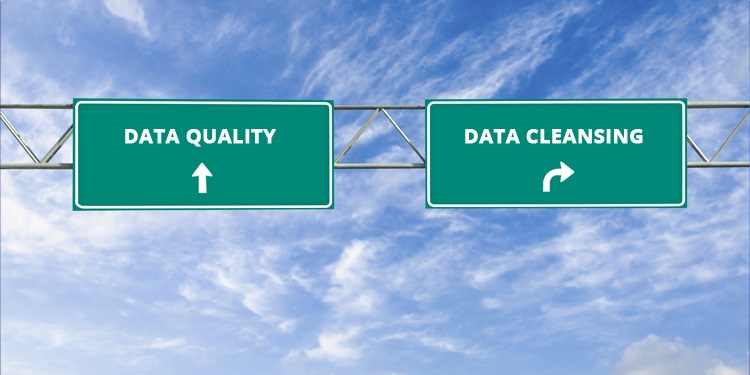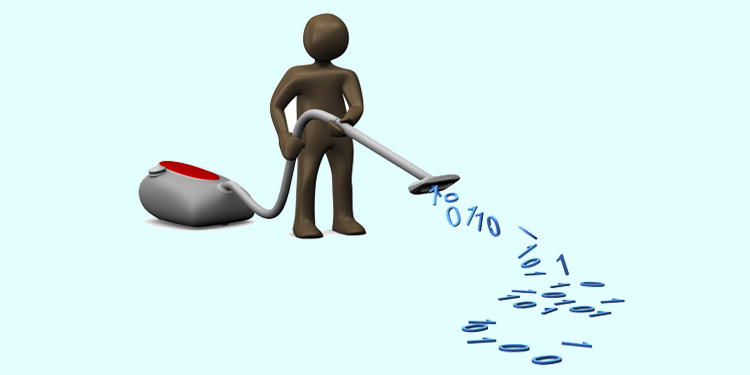
How Data Quality Is Related to Data Cleansing?
Author: Marshal Sequira
The universe of data more than doubles every two years (EMC). So, it is no wonder that countless businesses have a tough time ensuring data health. There is an insurmountable amount of raw and unstructured data flowing into company databases, adversely affecting its quality.
What Is Considered High-Quality Data?
This term refers to the overall utility of a data set. Good data positively improves customer engagement and helps design personalized content, thus, leading to higher lead conversion. Data is deemed to have high-quality when it encompasses the following 5 attributes –
- Accuracy
- Completeness
- Consistency
- Relevancy
- Timeliness
The most effective way to enhance data quality is by cleansing it. Learn about the benefits and best practices of data cleansing in this article.
What Is Data Cleansing?
Data cleansing, also called cleaning, refers to the process of identifying, correcting and eliminating corrupt or inaccurate entries from a data set. It also helps to get rid of the information that has become obsolete due to people changing their contact information, switching jobs, or migrating to other cities. Business organizations can achieve lower operational costs and better ROIs on marketing campaigns with the help of clean data.

Benefits of Data Cleansing
It has been established that data cleansing significantly improves data quality, but how exactly does it happen? Let us understand the benefits of data cleansing is detail –
Improves Customer Acquisition
Cleansed data provides a more accurate prospects list that can be targeted with personalized deals and discounts for subsequent conversion. It also ensures great engagement on email marketing and postal campaigns, simply because the chances of encountering obsolete addresses are very low. Cleaned data paints an accurate picture of multi-channel customer data that provides businesses an opportunity to deploy marketing campaigns on those very channels. Simply put, clean data tells you the online or offline platforms your clients use to interact with your brand.
Better Decision-Making
Accurate customer data is the cornerstone of effective decision-making. Clean data is instrumental in supporting better analytics and overall business intelligence. Executing clean data-backed strategies leads to higher sales. A study by Sirius Decisions concludes that on an average, a B2B enterprise doubles its incoming data every 12 to 18 months. This statistic means that there is always a tonne of valuable data for companies to use, provided they clean it periodically. But, surprisingly, most of these setups cannot even recall the last time a quality check was carried out on their customer data. Cleansed data is what keeps you ahead of the competition.
Better Organize Business Practices
Cleansed data helps in figuring out the value of internal positions, and whether people within those positions can be integrated elsewhere for improved performance. Your business can also better understand the value it is creating for customers, and what needs to change to make those offerings better. Data cleansing coupled with predictive analytics can help identify a new product or service opportunity. High-quality data is also suggestive of novel marketing channels and can sometimes include the ones your rivals don’t know about. For instance, if a recently deployed marketing campaign is not generating a response, your enterprise can consult clean data to look for alternate channels.
Enhances Productivity
Know whether your employees are making the best use of their work hours by consulting a clean and well-maintained database. Furthermore, an accurate and consistent data set ensures that your sales and marketing departments don’t go chasing after outdated customer information or invalid vendor files. Clean data mitigates fraud as your staff holds access to the right vendor and client data at the time of making payments and/or receiving refunds.
Increases Revenue
Businesses that continually strive to improve their data’s consistency and accuracy can expect an improvement in lead response rates, which eventually increases their overall revenue. Clean data also significantly reduces the number of returned or bounced emails. It eliminates the problem of data duplicity. Duplicate entries mess up databases. Duplicate data can seriously deplete a company’s time and resources. For instance, you may annoy a loyal customer by sending repeated emails about your business offerings if your marketing department uses substandard data replete with duplicate entries.
Best Practices for Data Cleansing
Now that you know the benefits of data cleansing, learn about how to have a clean database in five following steps –
Define Data Quality

What do you expect your data to equip you with? Define Key Performance Indicators (KPIs) for data quality and also brainstorm on how to meet them. Also, figure out how you will track data hygiene continuously. Identifying incorrect data is not enough! Investigate the main source(s) behind incorrect data – where is it coming from?
Standardize Data at the Point of Entry
Prevention is better than cure. You cannot expect your data to stay healthy if you let dirty data enter your CRM platform. Before cleansing, set up guidelines to ensure that all information enters your CRM in a standardized manner. This will make catching duplicates at their initial port of entry easy. How can you do this? Get top-level management involved and create Standard Operating Procedures or SOPs to avoid bad-quality data from entering your CRM, as much as possible.
Validate Data Accuracy
Automate the validation process with the help of various data cleaning tools that can be researched online. For instance, try using a data hygiene tool for email verification. You can also choose to merge your old email database with third-party data providers like Lake B2B. Third-party lists allow you to cross-reference data and check its validity.
De-duplicate Data
This process entails getting rid of duplicate data entries that reduce the efficiency and accuracy of business processes. If your company deals with a large number of records across multiple systems, it becomes even harder to prevent duplicity. Furthermore, duplicate entries can cost you substantial data storage – something that does not come cheap. Therefore, automate the process of weeding out duplicate entries as opposed to manually eliminating them as that will save countless man-hours.
Append Data
Now that your data has been verified, validated, and has come clean of duplicities, it is time to refresh it. How? By adding to it! For instance, say you have the names, phone numbers, and addresses of your clients but need their email ids for deploying your new email marketing campaign – get your list appended! Data can be appended for adding new information, or by re-checking whether the old information is still valid. The best way to get your customer data appended is by relying on third-party data providers like Lake B2B.
Over to You
Data cleansing is paramount for improving data quality. Use the best practices listed above as a starting point for cleansing your data and expect a higher return on customer engagement, in-house business processes, marketing campaigns, and overall ROIs.
About Author
![]()
Marshal Sequira, is the VP for Business Development & Partnerships at Lake B2B. A technology geek with deep industry knowledge, Marshal has championed the B2B data space and enabled double digit growth for global enterprises. His business models have inspired partners globally to embrace data-driven partnerships. Over the last 13 years he has built a reputation for developing the best business strategies, incubating new business models and expanding partner channels world-wide.




